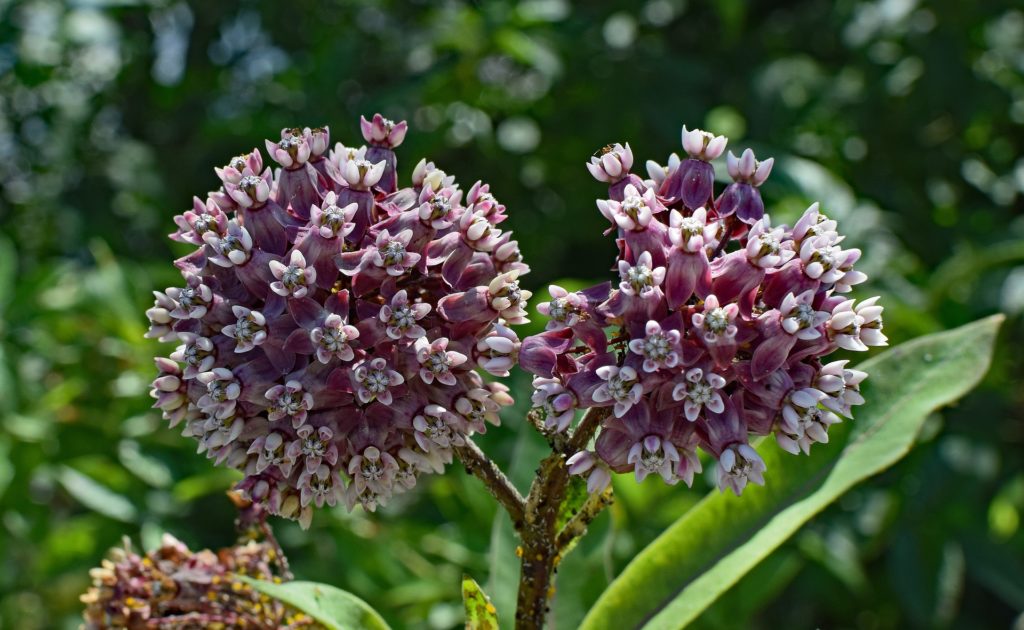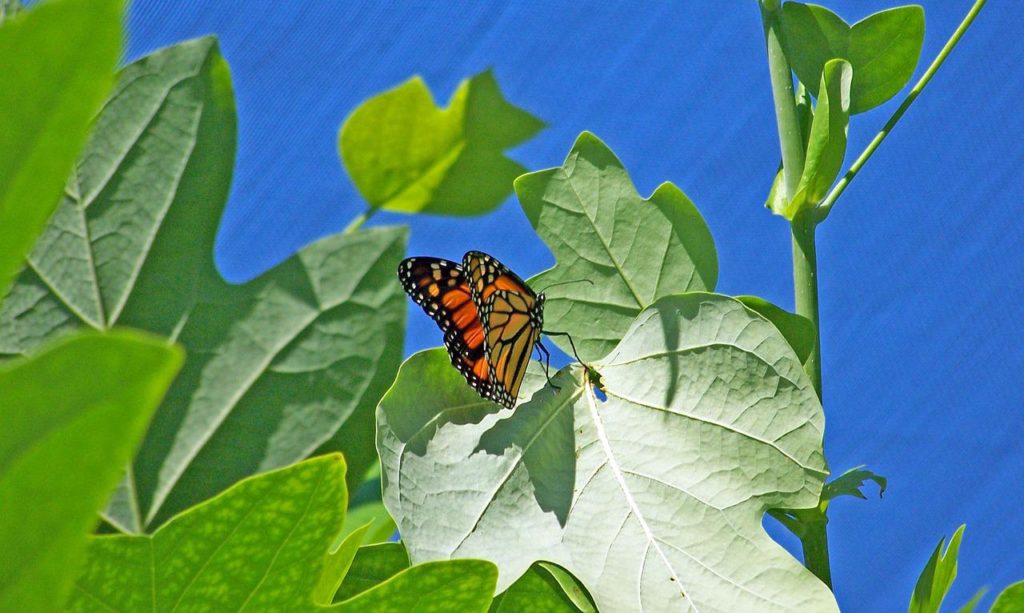They are 6 Native Milkweed Plants in California. Five of them are also native to other parts of the Western US. Only Indian Milkweed (Asclepias Eriocarpa), also known as Kotolo or Woollypod Milkweed, is only native to California and some adjacent areas in Nevada.
Essential Facts for all California Native Milkweed Varieties
All California Milkweed Varieties are perennial plants. A perennial plant means that the leaves will turn yellow in late Fall and eventually fall off. In early Winter, the entire plant will disappear. The Milkweed Plant stores all energy in its root system. The new plant shoots will grow from the roots (rhizomes) in Spring. Because of Milkweed Plants’ long and vast root system, new plant shoots will come out feet away from the original planting ground. One reason why Milkweed Plants are called “weeds.”
Indian Milkweed (Asclepias Eriocarpa)
Woollypod Milkweed grows in dry, rocky areas, valley grasslands, and foothill woodlands. The elevation area is between 650 and 6,250 feet, and the cream and yellow flowers blossom between May and October. The stems grow up to 3 feet tall, but the plant will spread out quite large. The leaves of the Indian Milkweed are covered with white hairs and provide with their fleshy and large leaves a perfect food source for Monarch Caterpillars. This Milkweed variety is rare to find in nature and even more rare to purchase in any nursery. It is challenging to grow from seeds with a meager germination rate. However, it will be resilient to challenging conditions when the plant is rooted.
Showy Milkweed (Asclepias Speciosa)
Showy Milkweed is versatile and grows from very dry to very moist soil. One finds it very often along river and creek banks because the plant thrives with water. Therefore it is sometimes also known as Creek Milkweed. It is the most populous variety in the Pacific Northwest Region but can be found throughout the Western US. The stems grow up to 6 feet tall, and the large and fleshy leaves are an excellent food source for Monarch caterpillars. The flowers are pink and white and bloom from May to September.
Narrow Leaf Milkweed (Asclepias Fascicularis)
This widespread milkweed variety grows from 150 to 7,200 feet and grows up to 3 feet tall. It is widespread in California and likes open, sunny areas, valley grasslands, and foothill woodlands. Narrow Leaf Milkweed blossoms from May to October with pinkish-white flowers. It is widely available in Plant Nurseries due to its relatively easy and fast-growing process. Unfortunately, this milkweed plant does not provide a good monarch Caterpillar food source due to its “narrow leaves.” But when it grows mature, caterpillars will find enough food.
California Milkweed (Asclepias Californica)
California Milkweed grows on flat and grassy or brushy slopes in many areas. One finds it in elevations from 650 to 6,890 feet, which is relatively uncommon in the Central Valley. It grows up to 3 feet with purple flowers that bloom from April to July. It is an early food source for Monarch Caterpillars.
Heartleaf Milkweed (Asclepias Cordifolia)
Heartleaf Milkweed likes dry and rocky areas and is found mainly in the North Coast Ranges of California. As the name suggests, the leaves are heart-shaped and grow on stems up to 3 feet high. The flowers are dark pink to purple and bloom between May and July.
Woolly Milkweed (Asclepias Vestita)
Not to be mistaken with the Woollypod Milkweed (Asclepias Eriocarpa), this Milkweed grows in dry areas of the Mojave Desert and the San Joaquin Valley. It is relatively short, up to 32 feet in height, and blossoms between April and July with yellow-green flowers.


